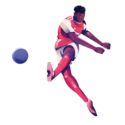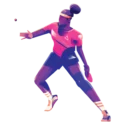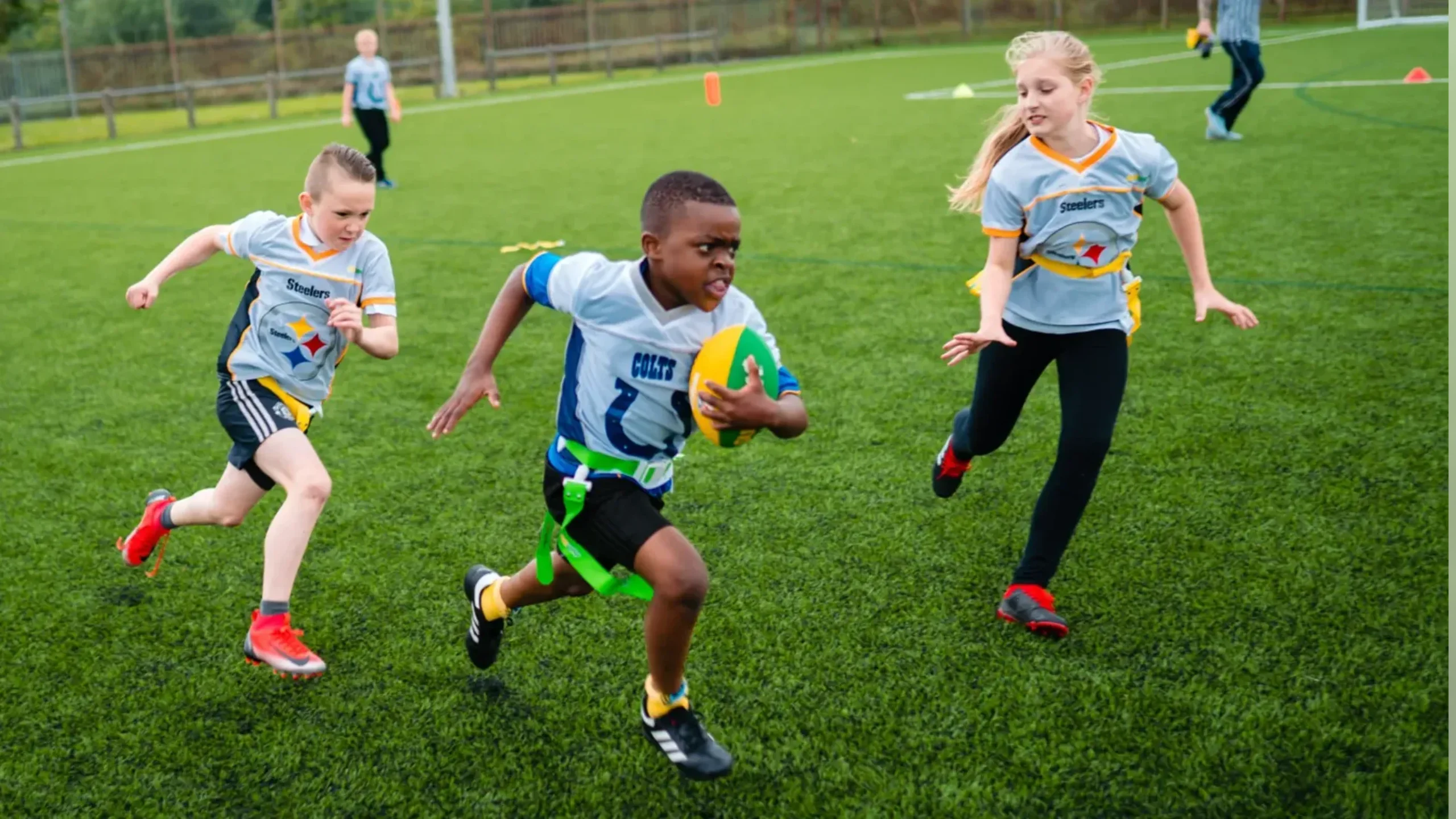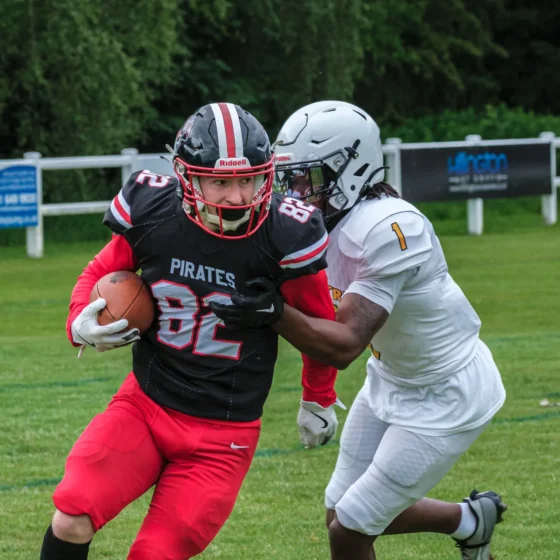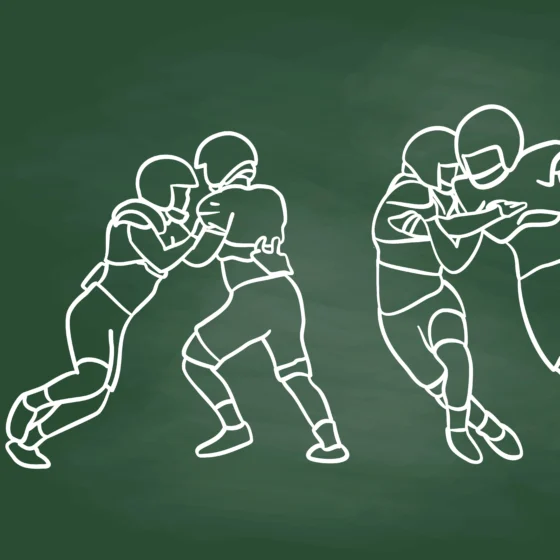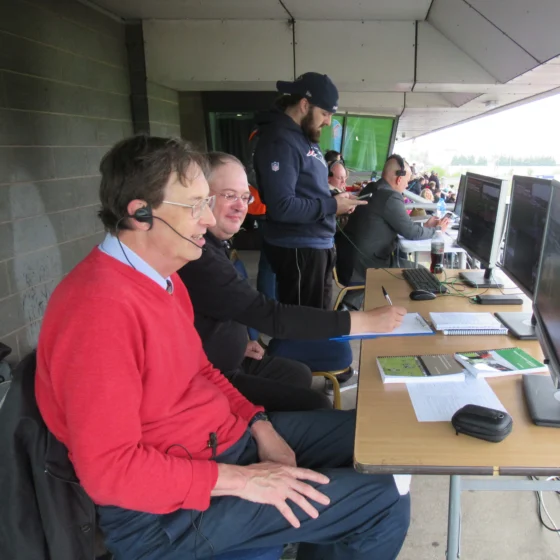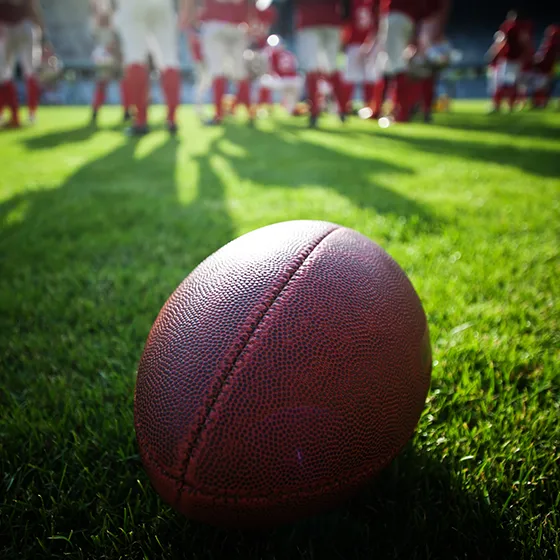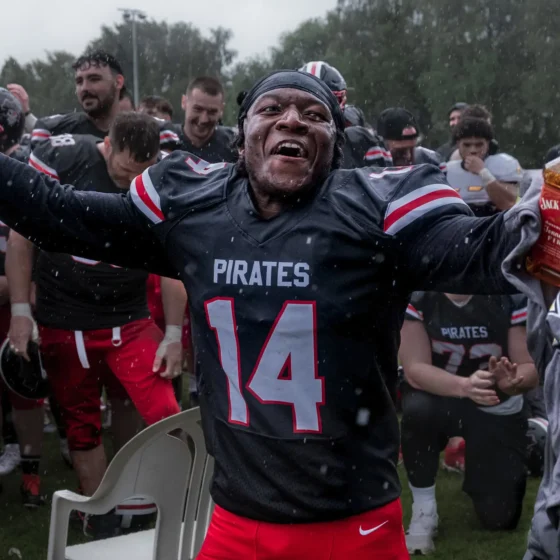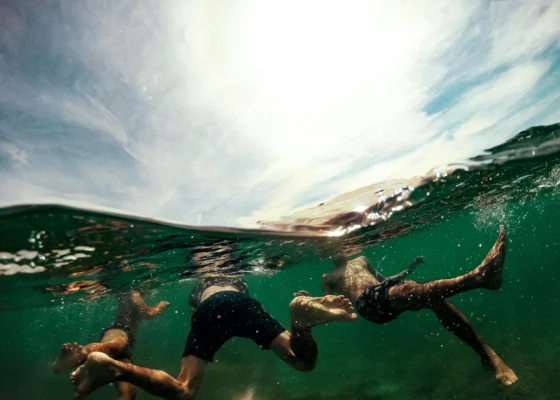Flag football is the fast-growing variant of American Football that offers all the fun without the collisions. It is designed to be more accessible and inclusive, and as such is expected to enjoy phenomenal interest from players of all ages and abilities ahead of its Olympic debut at the LA Games in 2028.
Whether you’re new to the sport or considering joining a team, this guide will cover the essentials to get you started. We’ve enlisted the help of flag football veteran Kellie Barrett, whose 20 years in the sport included founding the Coventry Cougars and playing internationally for Great Britain. These days she coaches the men’s under-21s side, developing the players who may well go on to represent Team GB at the Olympics in LA.
What is the history of flag football?
It might seem like a brand-new sport, but flag football was actually invented during the Second World War. American soldiers came up with what was then called “touch and tail football” as a way to play their favourite sport without injuring each other. It is believed that Fort Meade in Maryland hosted the first flag football games, and the National Touch Football League was founded in St. Louis, Missouri in the 1960s. In Britain, organised flag football leagues first emerged in the late 90s.
Kellie says: “About 20 years ago I did a taster session for PE and it was really fun. And then they did an after-school club which I joined with my sister. We loved it. We continued to play at a club outside of school then in 2009, me, my sister, my mum, and my dad decided to set up our own team in Coventry. On September 9th 2009, we set up the Coventry Cougars. This year we’ll be going for our 10th British Championship with our women’s team.”
What is the difference between flag and contact football?
Flag football is a variation of American football where players “tackle” opponents by removing a flag attached to their waist rather than making physical contact. This makes the game safer, more inclusive, and easier to learn for beginners.
Kellie says: “You start on the five-yard line of the field, and you get four attempts (known as downs) to get to the halfway line. If you get past the halfway line, you get another four attempts to score. The idea is to just get down the field to get to halfway. Once you’ve got halfway, get down the field to the end zone.”
How many players are on a team?
Each team has five players on the field at once. Positions include quarterback, receiver, and defence, but unlike the contact version of the sport, roles in flag football are flexible. Games are generally split into two halves, each lasting 20 minutes, with a running clock. Tournament games are sometimes shorter.
Kellie says: “There are only five of you on the field at any one time: your centre, who snaps the ball to the quarterback; the quarterback, who throws it; two wide receivers; and one usually in a slot position.”
Are the rules complicated?
The fundamental aim is to score points by advancing the ball into the opposing team’s end zone. This can be done by passing or running the ball. Instead of tackling, players stop the ball carrier by pulling one of the flags attached to their waist. Blocking is usually prohibited, emphasising agility and positioning over brute strength.
Kellie says: “I always find the best thing is you throw them into it. You put them in a game and you say, ‘These are the basic rules.’ Then, when something happens, you can explain: ‘You can’t jump out of a tackle,’ or ‘You can’t push someone off when they’re trying to tackle you.’ We try not to scare everyone by listing all the rules at once. We start with the basics and build off that knowledge as we go along. If you got a new phone that was a different brand, you’d go through the introduction steps, have a play around, and figure it out. It’s the same thing.”
How does scoring work?
A touchdown scores six points. Unlike in American Football, there are no kicks for conversions following a touchdown. Instead, teams can score extra points by running or passing the ball into the end zone.




